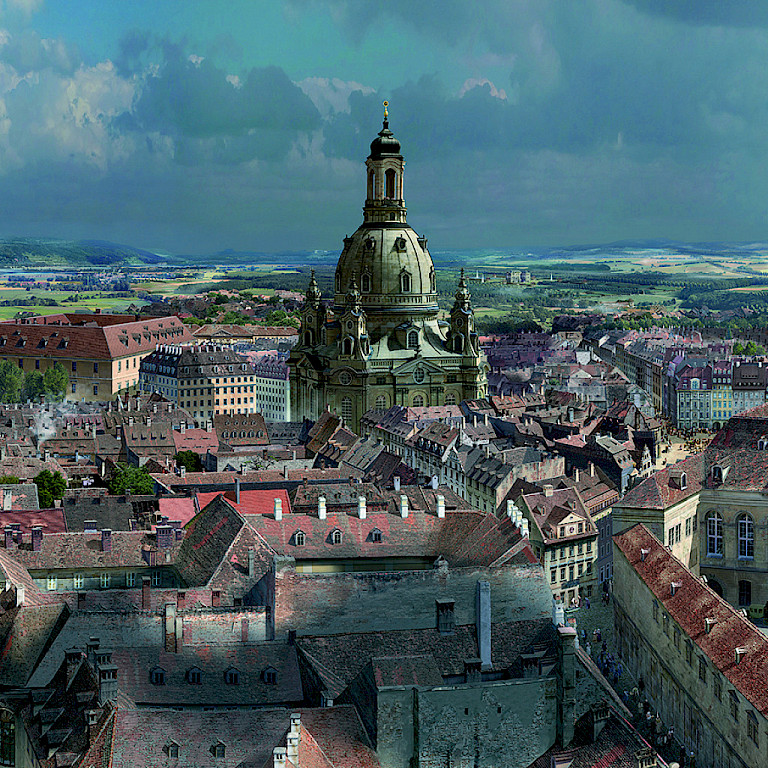
Blick auf die Frauenkirche
Foto: Asisi Panometer
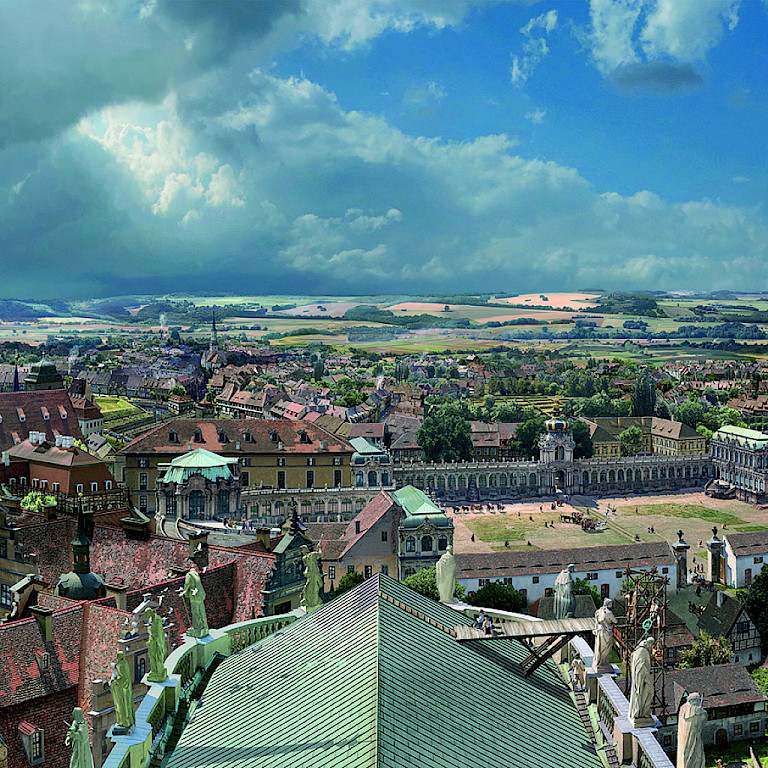
Blick von der Hofkirche auf Zwinger und Theater
Foto: Asisi Panometer
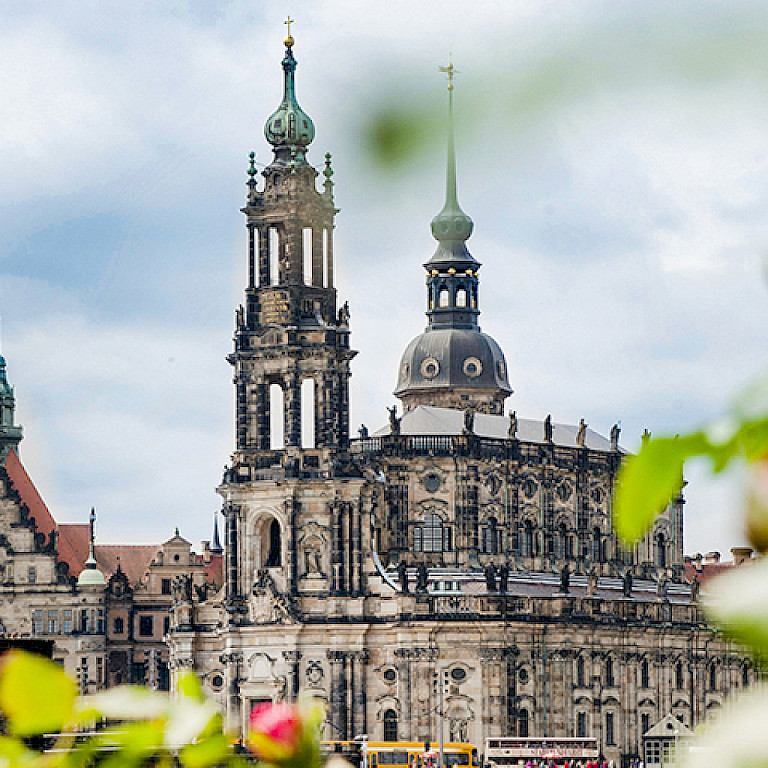
Hofkirche
seebacherdoris/stock.adobe.com
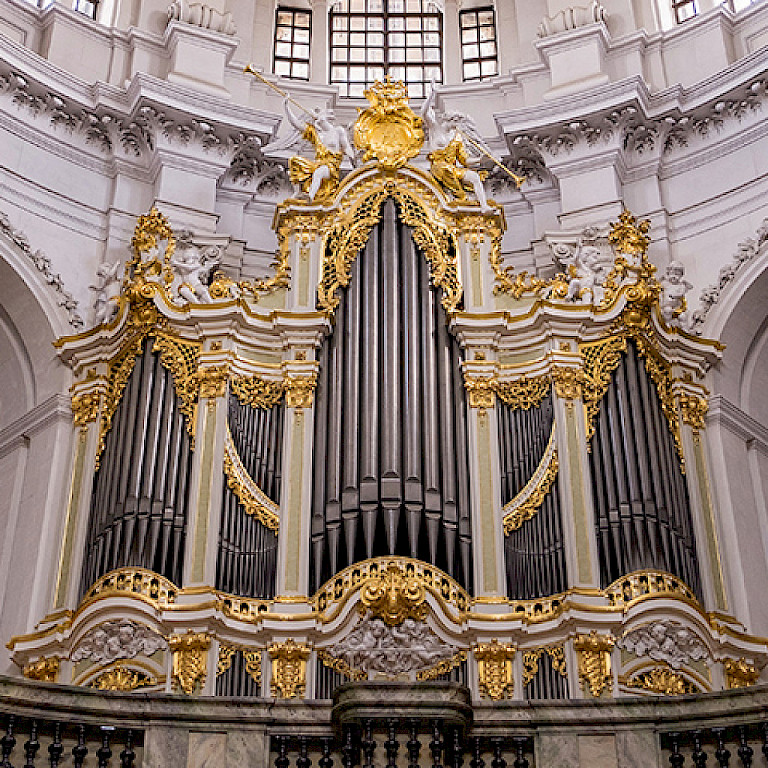
Die Silbermann-Orgel in der Hofkirche
fotografci/stock.adobe.com
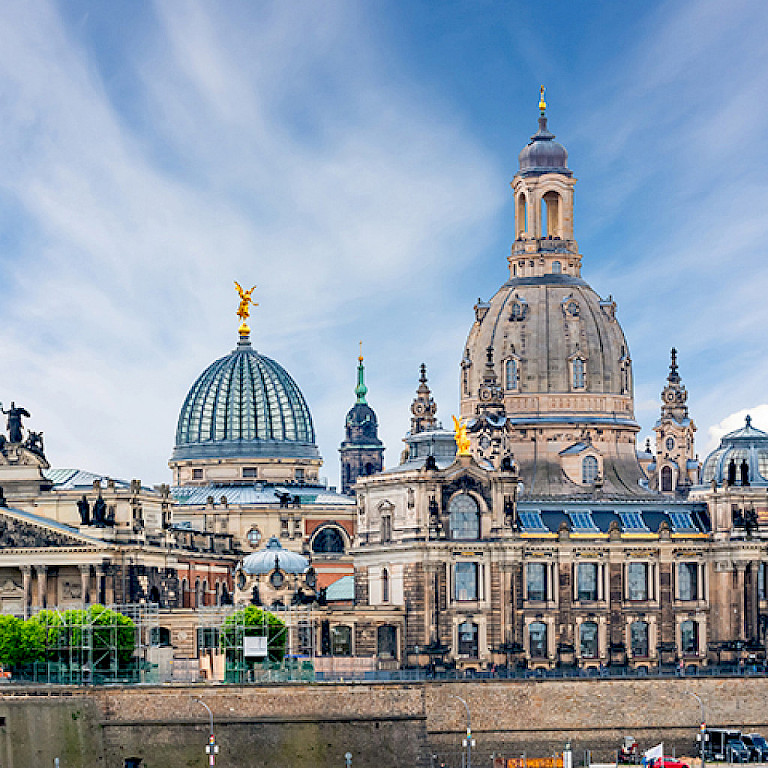
Frauenkirche
Mistervlad/stock.adobe.com
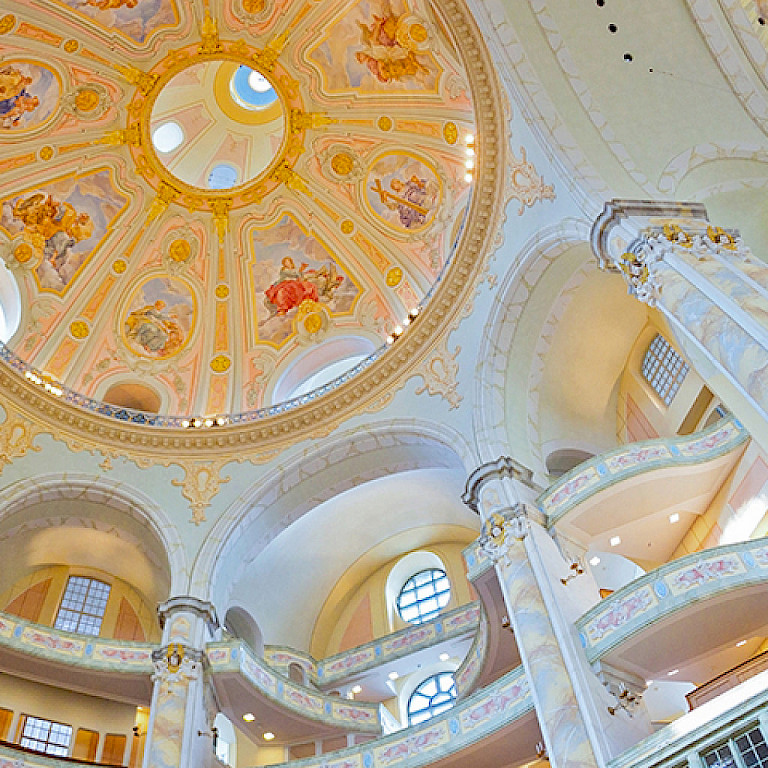
Die Kuppel der Frauenkirche
santosha57/stock.adobe.com
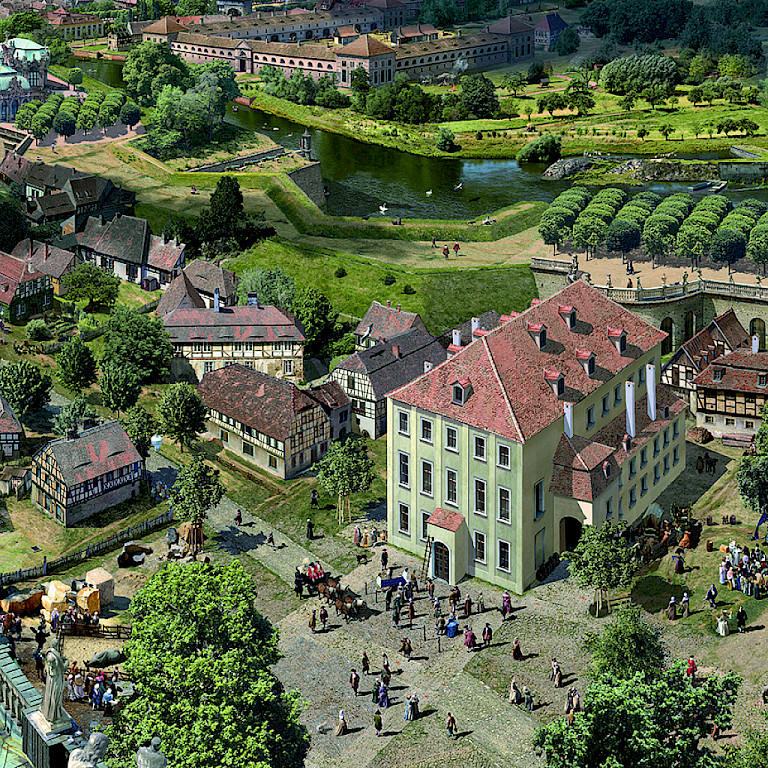
Italienisches Dörfchen
Foto: Asisi Panometer
08 THE CHURCH
Since the Reformation, the Saxon sovereigns were evangelic. This new religion was also dominant throughout the population in the second part of the 16th century. In 1697, Augustus the Strong converted to Catholicism during his fight for the polish throne, causing outrage and insecurity in Saxony. To comfort his inhabitants, the Elector ensured that he would be able to keep his previous confession.
From 1708, the opera house at the Taschenberg was converted into a court chapel for Catholic services. However, Augustus did not dare to build a Catholic church in his Protestant Dresden.
The unrest in the year 1726 shows how tense the relationship between the confessions was in Dresden. The cause for this was the murder of the protestant cleric Hermann Joachim Hahn, murdered by the catholic soldier, Franz Laubler. Rumours quickly circulated: the murder was part of a catholic conspiracy. Sermons and false reports fuelled the atmosphere leading to days of riots and violent attacks on catholic inhabitants. Pictorial representations that show from a protestant point of view, what happened right up to the public execution of the cleric’s murderer Franz Laubler, are part of the exhibition.
The competition between the denominations also manifested itself in new, representative church buildings. The Dresden council wanted to set an example of the city's Protestant identity with the new Church of Our Lady in 1726. George Bähr designed the Church of Our Lady as a central building with a square ground plan, surmounted by a bell-shaped dome.
At the same time the Church of Our Lady was being built, the catholic church was built near to the Royal Palace in 1739. The architect, Gaetano Chiaveri as well as scores of construction workers and sculptors came from Italy to Dresden. They all settled near to the large construction sites and created their workshops, dwellings, and inns at a place soon to be called the Italian Village.
Lorenzo Mattielli and his son Francesco created 78 large scale statues for the Catholic Court Church to which the figure of the holy Maria Maddelena de’ Pazzi belongs. With the completion of the tower in 1756, the Catholic Court Church was finished. However, it took a further 50 years until its bells rang for the first time.